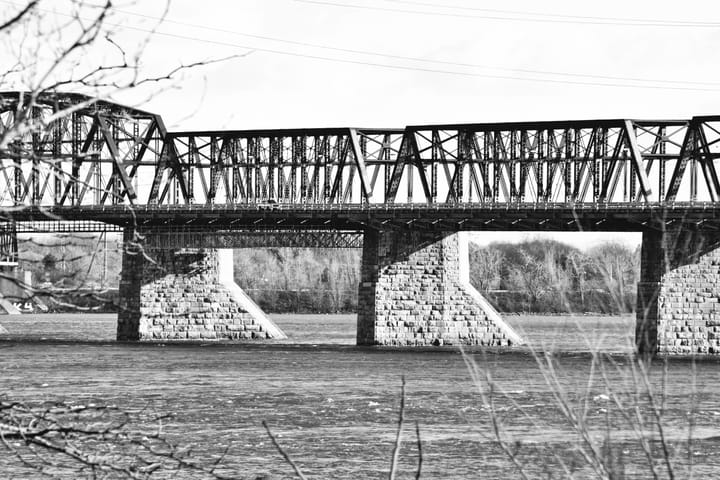The Montreal Clock Tower: A Silent Tribute to Time and Memory
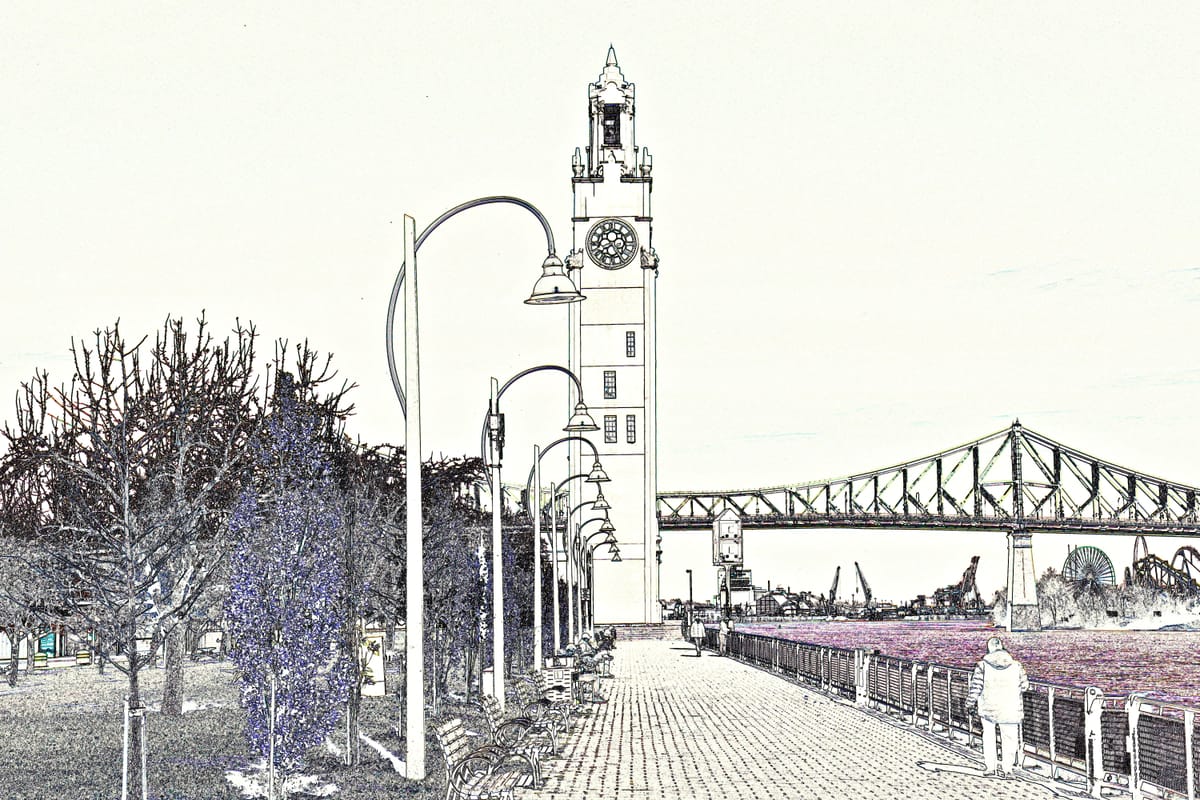
An impressive structure standing tall along the waterfront of the Saint Lawrence River is the Montreal Clock Tower. It was built to pay tribute to the maritime heritage and to honor the brave sailors who sailed the waters of the violent seas during the First World War. Its elegant design, modeled after London’s Big Ben, serves as a reminder of Montreal’s connection to global architectural traditions and its role as a thriving port city in the early 20th century.
This clock doesn’t just mark hours and minutes; it marks memories. Its story is one of resilience, adaptation, and enduring importance during a time when the simple wristwatch was only available to the few who could afford it. Public clocks were of great dependence for many people.
The structure was necessary during the port's important industrial age. The tower is a humbling reminder of our reliance on mechanical clock systems before the quartz revolution.
The Birth of a Landmark
Montreal became a metropolitan city in the early 20th century. Ships from around the world docked at its port, unloading goods and fueling the city's fast-growing economy. Yet, with this growth came a practical need for precise timekeeping to coordinate activities at the port.
The Montreal Clock Tower was completed in 1922. It was designed not only to tell time but also to honor the sailors lost at sea during the First World War. Its towering presence ensured both functionality and reverence, uniting the practical need for timekeeping with a solemn act of commemoration. The idea was brilliant, with the Prince of Wales first planning its inception in 1919. The project would be managed by the Montreal Harbor Commission.
The translucent clock faces with world-class architectural detail were a source of pride for the city. The structure also featured a smaller towering sibling, connected by a 13-meter curtain wall, creating a cohesive design. It was not only a landmark but a structure designed to be functional with its ergonomic design.
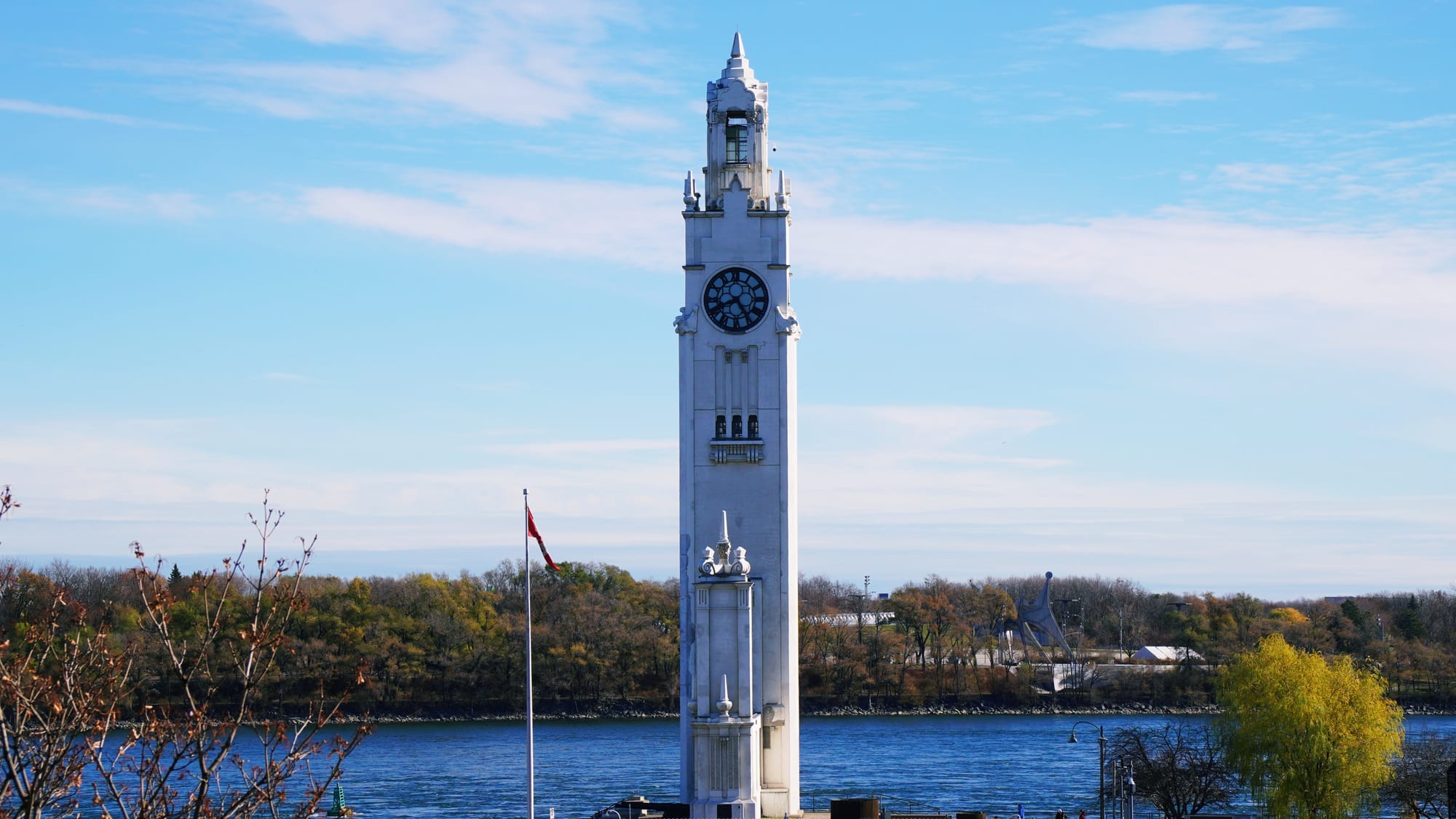
Under the Surface
The Clock Tower’s design was inspired by London’s iconic Big Ben. Its impressive height and intricate clock face make it a timeless feature. The clock still looks great today, especially when lit at night.
The tower was built using steel-reinforced concrete. It proved to be a smart choice given Montreal’s notoriously harsh winters and humid summers. Today, many structures are built using reinforced concrete, but this was truly an innovative construction technique during the 1920s that was only reserved for the most important structures and buildings.
The foundation was designed to withstand the powerful St. Lawrence River's waterfront. However, when carefully looking at the tower, there is still a lot to be desired: a massive reinforced concrete base is not only capable of bearing the tower's weight but enduring the immense pressure from the fluctuating water levels.
The clock's gears and mechanism were designed by the English engineering firm Gillett & Johnston. The mechanism features an interlocking gear system that operates the four 3.7-meter-wide clock faces in unison. Although it was originally designed to chime, the mechanisms were never installed, leaving the clock forever silent.
The tower’s 192-step staircase includes three observation stops, offering panoramic views of Montreal and the St. Lawrence River. The observation deck is usually left open to the public, but there are no guarantees when visiting the structure.
The Role of the Clock Tower
Besides its beautiful aesthetics, the Clock Tower played a practical role in the Old Port’s past operations. Grain stalls and warehouses once surrounded the tower, bustling with activity as workers loaded and unloaded goods. The clock’s clear, visible face ensured that timekeeping was synchronized, helping to regulate the port’s frenetic pace.
For sailors, the Clock Tower became a familiar sight—a landmark signaling arrival and departure, safety, and homecoming. Its position at the entrance of the Old Port symbolized the gateway to Montreal’s economic heart, reminding sailors of the city’s pivotal role in global trade. The chimes, though never installed, were envisioned to be an audible signal of reliability and order in an otherwise chaotic harbor.
The clock faces, designed to be visible from far distances, allowed ships to adjust their timing and, therefore, reduced errors in cargo operations. The clock made the port one of the most efficient in North America.
The surrounding area was very active, from the grain sheds to the transportation of goods destined for international markets. The collaboration with maritime operations cemented the Clock Tower’s iconic status.
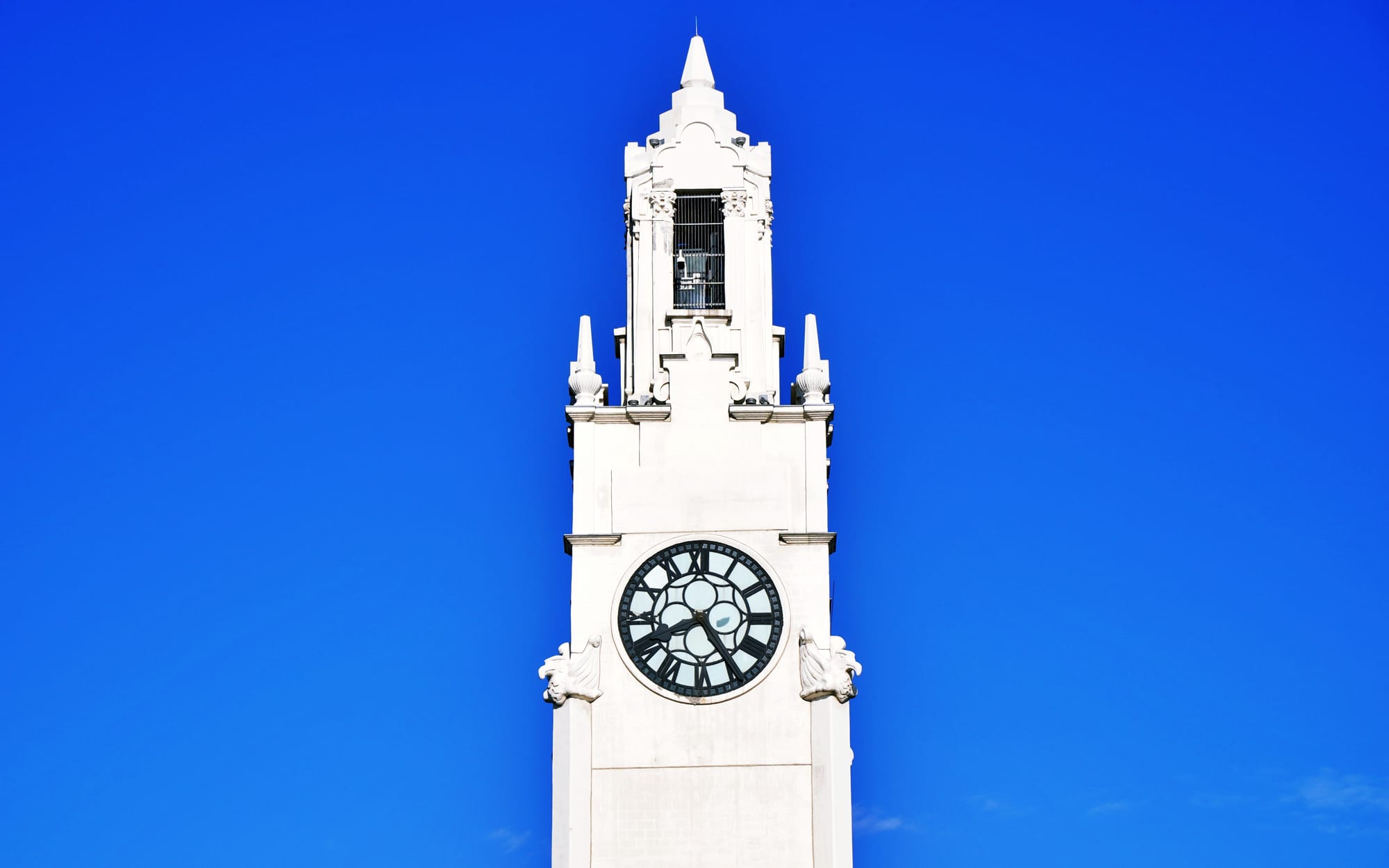
Under the Surface
The grain stalls surrounding the Clock Tower were vital to Montreal’s past economy. Storing and transporting grain destined for international markets was one of the primary activities at the port. The Old Port was once the second-largest grain exporter in North America.
The curtain wall connecting the main and smaller towers was originally designed to conceal these grain sheds, emphasizing both functionality and aesthetic considerations from the architect.
As maritime activity declined, the grain stalls were removed in the 1970s. Today, trees and open spaces fill the area, leaving the Clock Tower as a poignant reminder of the port’s industrious past. The absence of the stalls has turned the surrounding area into a blend of historical nostalgia and modern leisure, adding to the tower’s allure.
Challenges and Triumphs
During the port's working years, the tower was never fully restored, and wear became apparent. While the Clock Tower was never fully neglected, its relevance shifted after the Old Port ceased industrial operations in 1976.
The tower’s function evolved, becoming less about displaying time and regulating port activity and more about preserving the city’s history.
Restoration efforts in 1984, led by the Old Port Society, revitalized the tower, ensuring its structural integrity and aesthetic appeal. The works comprised resurfacing the tower's eroding facades, installing a new ventilation system, and maintaining the clock mechanism. What makes this landmark reminisce so romantically with the past is, indeed, its working mechanical clock, making it an attractive Montreal landmark.
From a useful timepiece, the Clock Tower has now risen to the status of a full-time historical monument, reflecting the city's adaptability to modern times. Even today, the tower paradoxically finds itself serving dual functions again. Here in Montreal, preserving its heritage through the port's industrial ages while still remembering its war heroes.
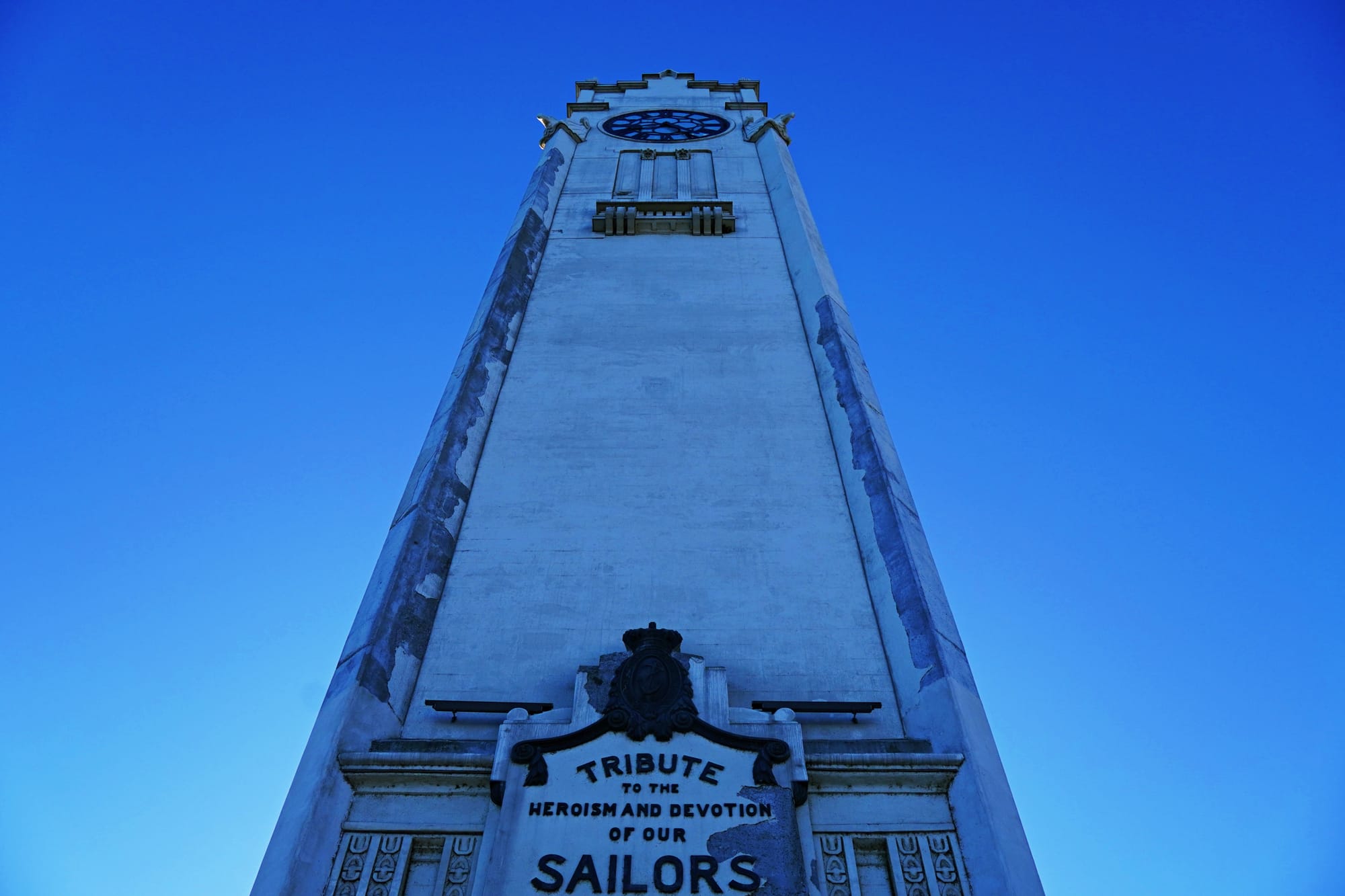
Under the Surface
Since 1986, professional clockmaker Daniel Pelletier has overseen the clock’s intricate mechanism, adjusting it biannually to account for daylight saving time. The pendulum requires constant care, breaking up to five times annually due to climate-related stress.
A $2.5 million restoration project in 1984 included repainted steel surfaces, the addition of a ventilation system, and addressed structural wear, securing the tower’s longevity.
In 1996, the Federal Heritage Buildings Review Office classified the tower as a Federal Heritage Building for its architectural and historical significance. Once a structure receives this designation, it will ensure ongoing preservation efforts. The program is meant to protect important historical Canadian symbols for future generations.
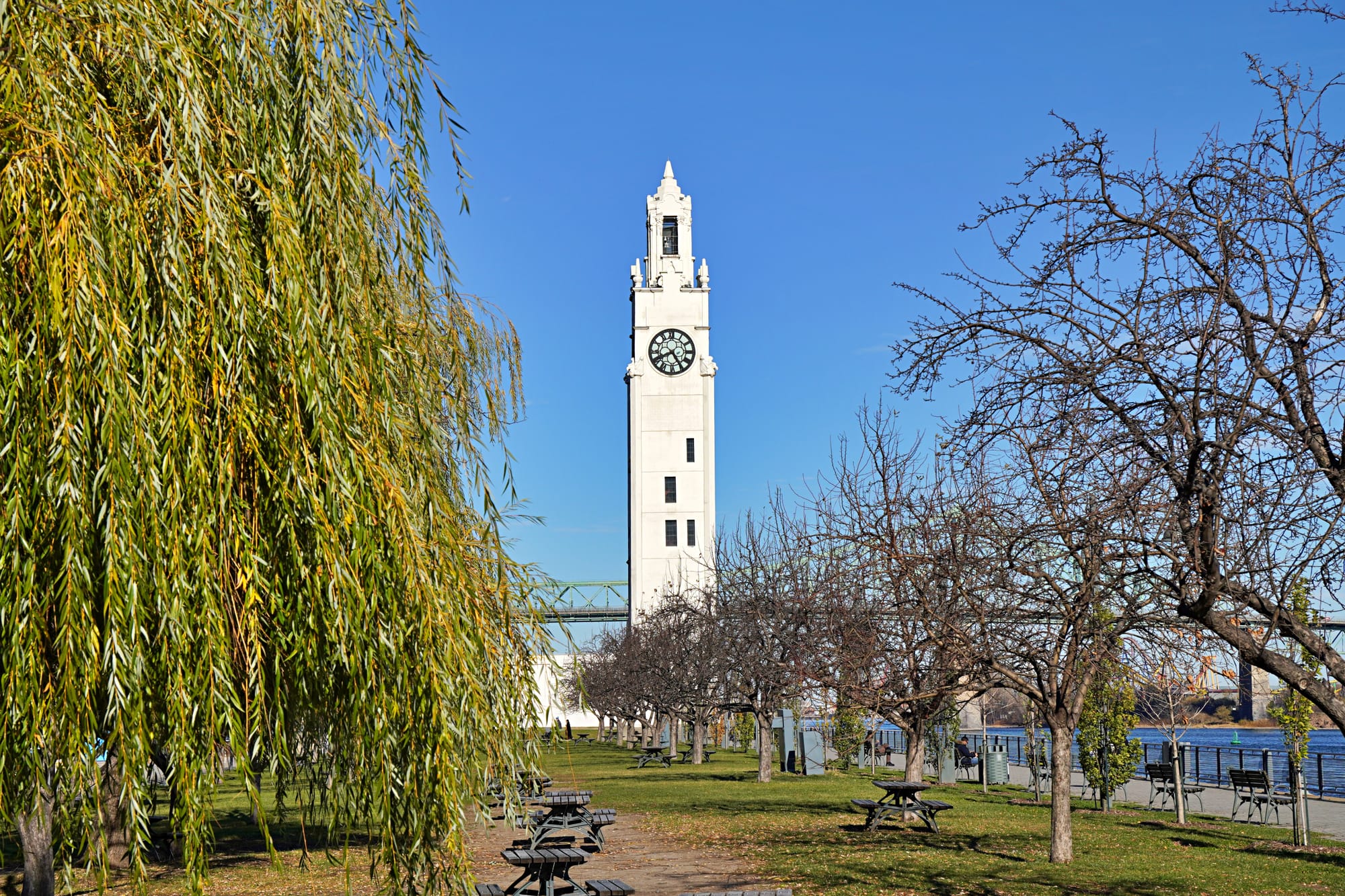
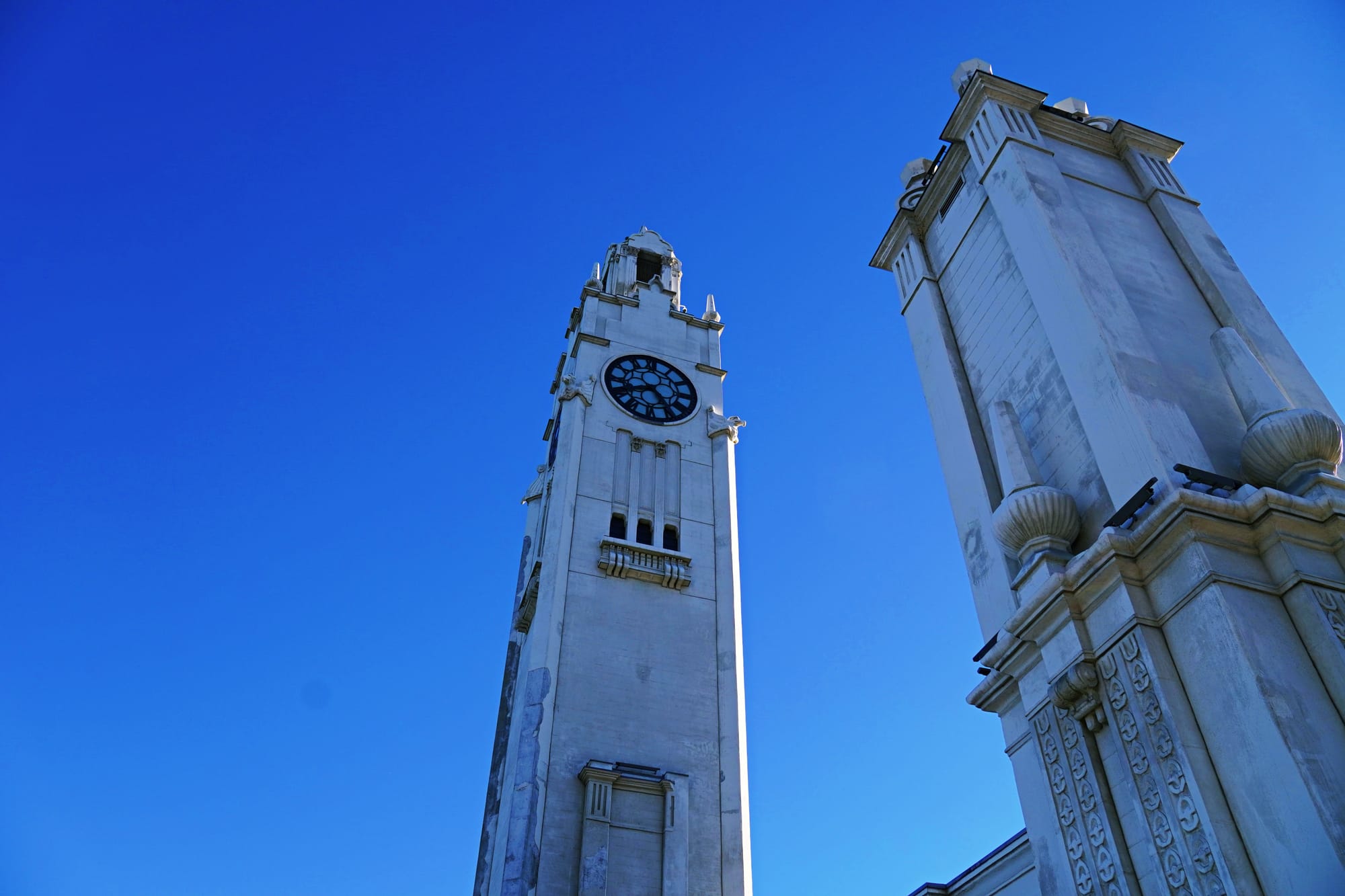
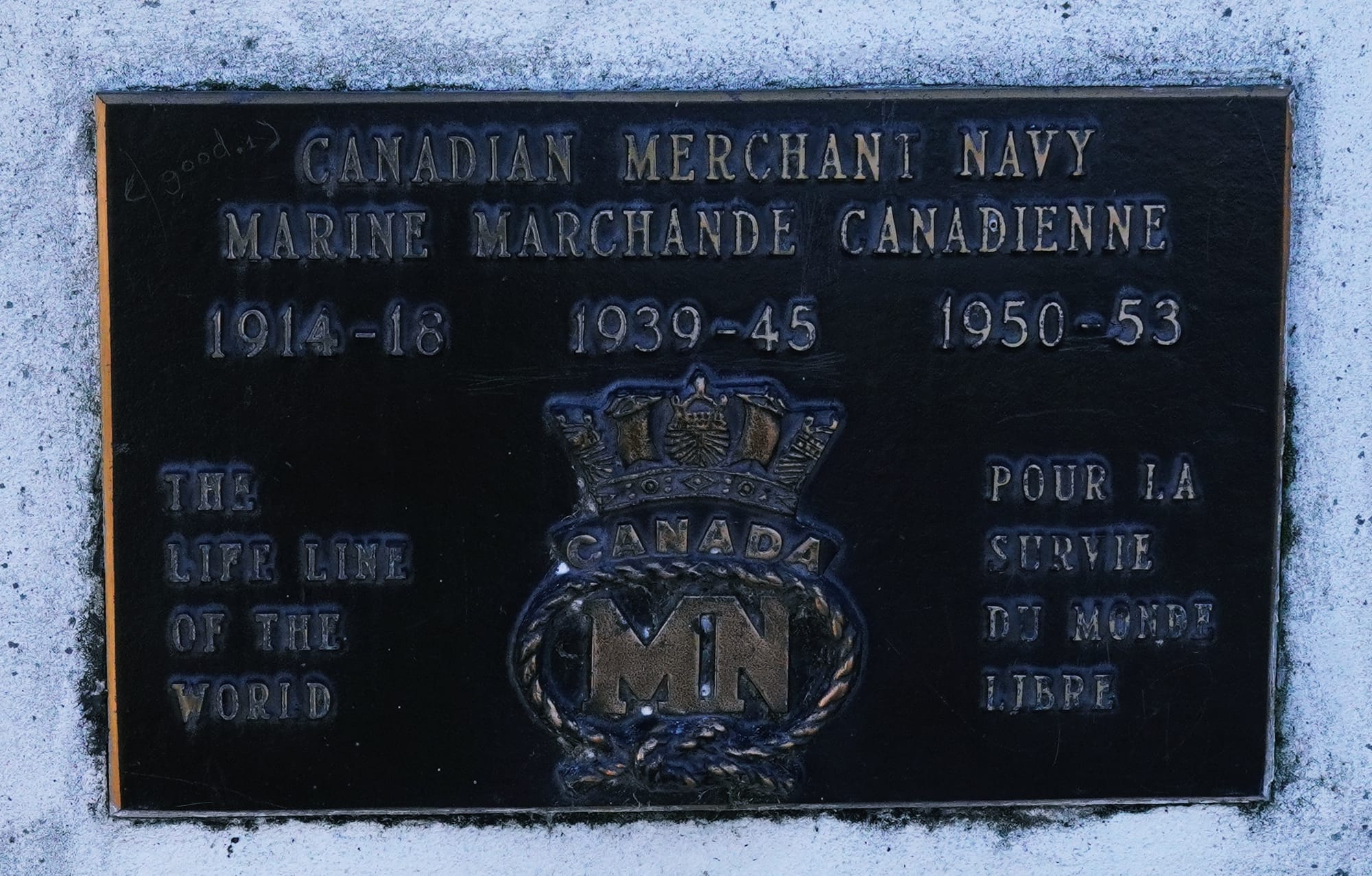
Left: Both towers captured in focus, showcasing the intricate craftsmanship of this historic landmark. Right: The commemorative navy plaque on the tower honors those who served in the First World War and now also stands as a remembrance for the sailors who fought in World War II and the Korean War.
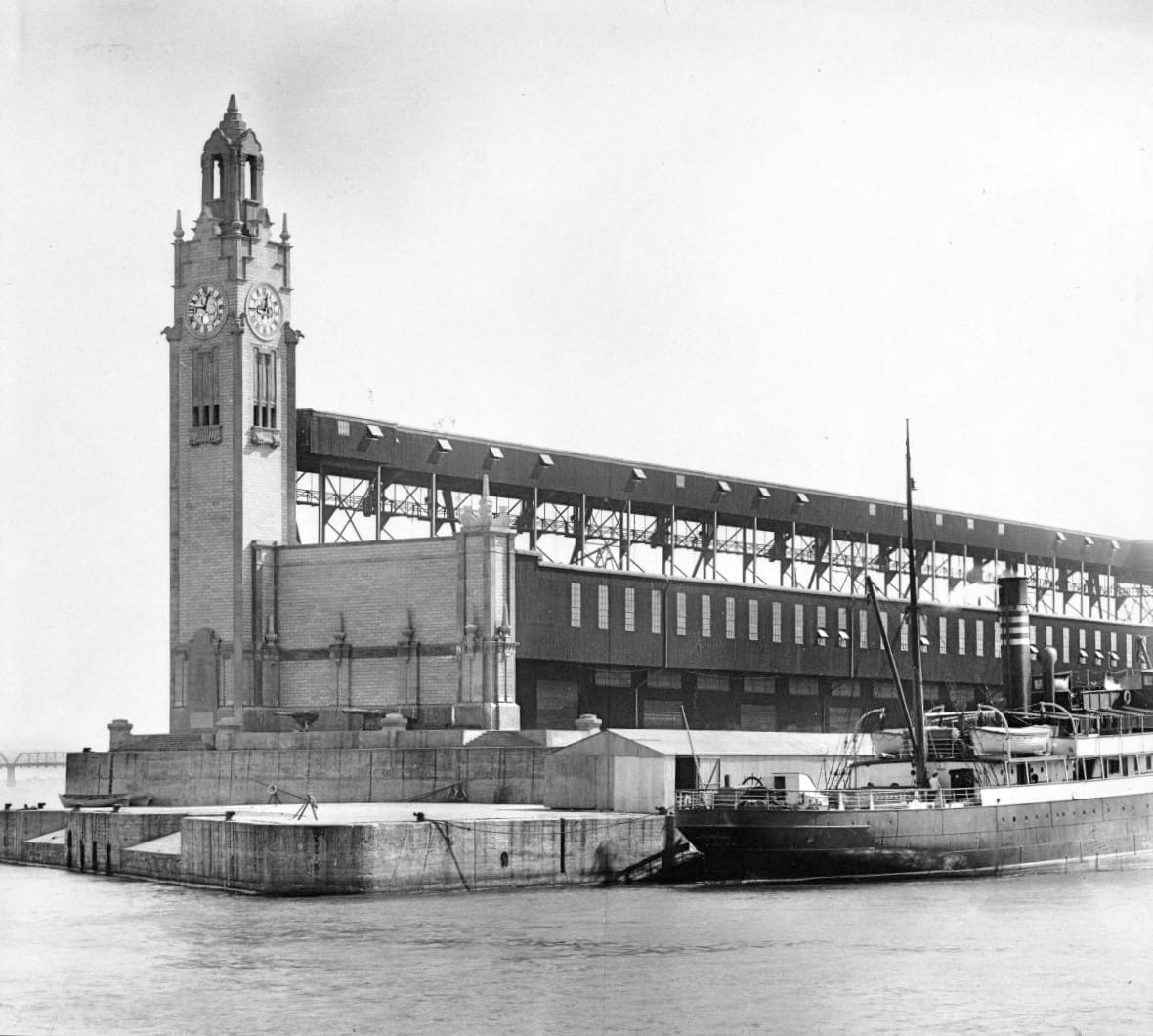
The Tower’s Symbolic Transformation
With Montreal expanding into its role as a cosmopolitan city, the Clock Tower also expanded its identity. No longer functioning as a time indicator, it now became a cultural representative of the city. It attracts many tourists and local visitors to the Old Port, where they come to see the tower. The steps provide everyone with a view from the top of Montreal and the St. Lawrence River.
The Clock Tower’s transformation is seen as a metaphor for Montreal itself. When the city evolved from an industrial hub to a center of culture and innovation, the tower transitioned from a functional structure to a cherished monument.
Its Beaux-Arts style, emphasizing symmetry and detail, became a focal point for city explorers and architectural study. When looking carefully at the tower, there is much to be desired.
Today, the newly constructed Beach, located a short distance away, has come to serve visitors as both a leisurely and cultural spot. It merges the historical past with the adaptations of modern times, with the Clock Tower thus serving as a timeless monument in which its legacy can be left to be admired.
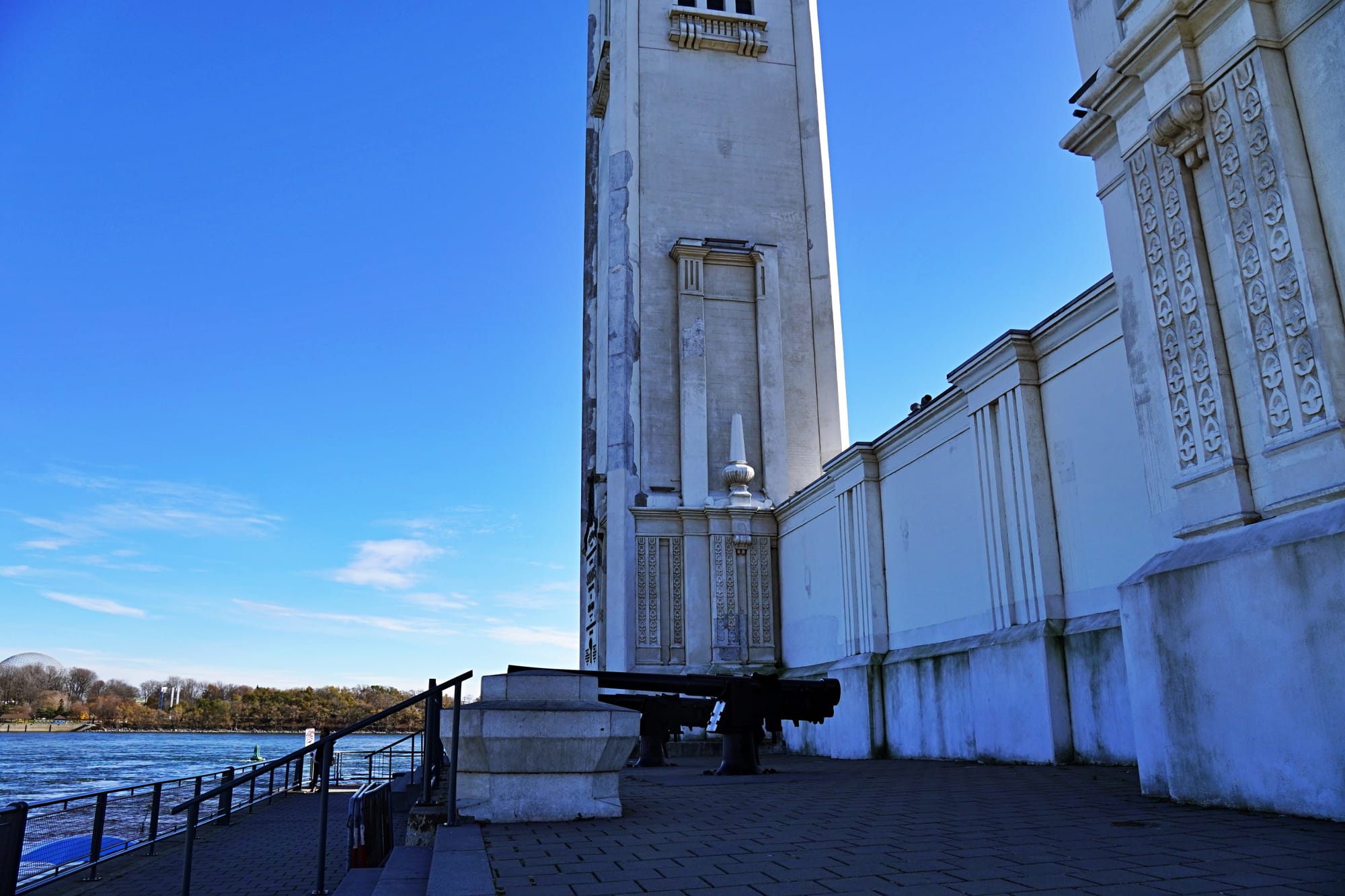
Legacy and Reflection
The Montreal Clock Tower symbolizes remembrance and tribute. It remembers the sailors who crossed the seas and risked their lives to uphold our safety. It also pays tribute to workers who have operated the port for generations and helped the city grow.
The tower's Beaux-Arts style, with fine detail and full of classical influence, is exemplary of what a masterpiece in architecture might look like. The landmark salutes the creative minds behind its design, including Montreal engineer Paul Leclaire. By making the tower both a structure of function and made to endure, we still get to enjoy it today.
Adjacent to the tower, visitors will find two historic cannons, a subtle yet powerful reminder of Montreal’s defensive past and its connection to maritime security. These cannons add depth to the tower’s surroundings, creating a narrative of both protection and remembrance that enriches its heritage value.
The Clock Tower is a point of convergence between the past and present for Montrealers, generations that uphold its tale. The root of its maritime nature, combined with architectural ingenuity and cultural symbolism, positions the clock tower among Montreal's most cherished landmarks.
Explore and Visit
If you're new to Montreal, a walk along Old Montreal's streets is something you can't miss. It shouldn't be hard to locate the Clock Tower from there; make your way towards it as soon as you can spot it from a distance. Look towards the shoreline when you can start seeing the water. It's located at the deep corner of the port, towards the green Jacque Cartier Bridge.
When walking along the waterfront where the old grain sheds used to be, the tower’s white façade will gleam against the sky, drawing you closer. Standing at its base, you’ll feel a sense of its grandeur and historical significance.
I found that the whole Montreal experience comes together here. You have a stunning view of the Old Port, with the iconic Jacque Cartier Bridge behind it, all while standing next to the powerful Saint-Lawrence River. And not least, the towering presence of the clock tower.
It's a place where different eras of the Montreal region can be experienced simultaneously. I highly recommend all first-time visitors take an easy stroll to the Clock Tower.
If you're lucky enough to find the door open, climbing the 192 steps to the top is an adventure in itself. Three observation stops along the way allow you to pause to catch your breath and admire the panoramic views.
From the top, the sight of the St. Lawrence River, the bustling Old Port, and the Montreal skyline is breathtaking—a perfect reward for the effort. Don’t forget to take a moment to observe the clock faces, marveling at their size and craftsmanship.
It would be good to wind up your visit by first exploring the tower and then relaxing at the nearby beach. It's not exactly the kind of place you’d expect to find a beach, but somehow, they’ve made it work. It's a quiet spot that, for no apparent reason, perfectly complements the experience. Whether you’re there with family and friends or visiting solo, this landmark offers something for everyone, blending history, culture, and leisure.
References
- The Clock Tower - Tourisme Montréal
- The Clock Tower turns 100 - Tourisme Montréal
- Montreal Clock Tower - Wikipedia
- Clock Tower - Parks Canada
- The Clock Tower Celebrates its Centennial! - Old Port of Montréal
- HistoricPlaces.ca - Montreal Clock Tower
- The Old Port’s Clock Tower Celebrates its Centennial
- Clock Tower - Port of Montreal


